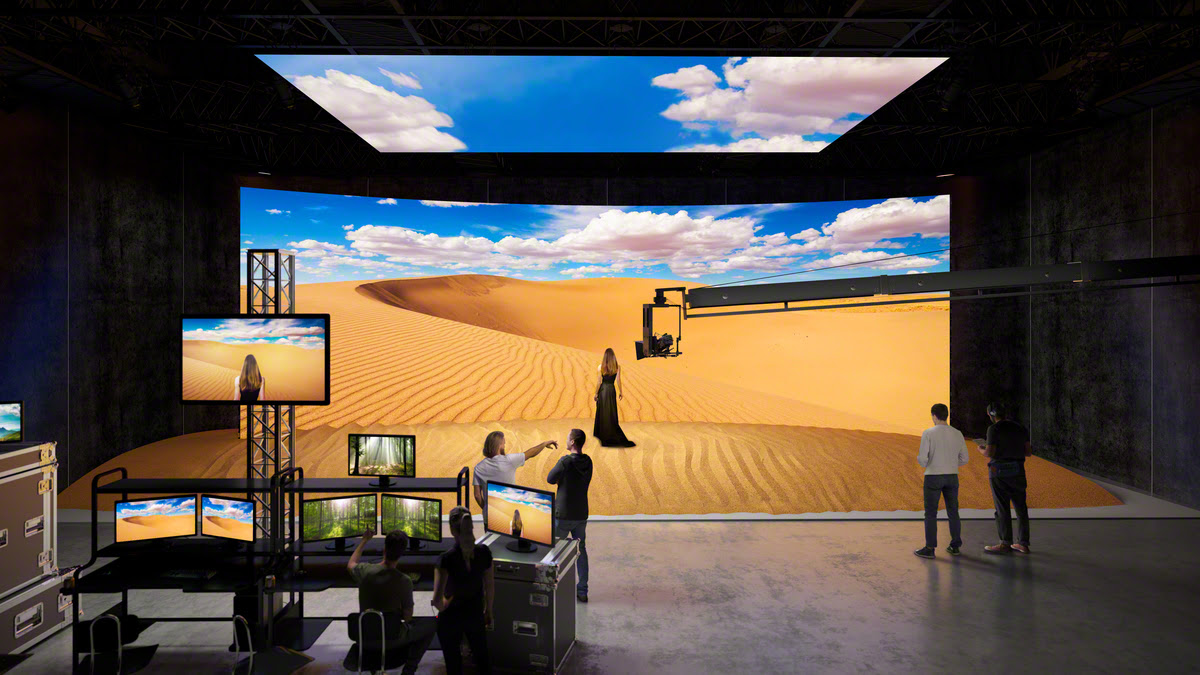Sony Announces New Virtual Production Tool Set
The new Virtual Production Tool Set is designed to improve pre-production process and total color management

LOS ANGELES—Sony Electronics Inc has announced a new Virtual Production Tool Set to help improve pre-production and on-set workflows. The new tool set works with the Sony VENICE, Crystal LED and other HDR-enabled LED walls to improve performance and help solve common virtual production challenges such as color matching and moiré to enhance in-camera visual effects, Sony reported.
“The new Virtual Production Tool Set was born from the voice of our creative community who requested tools to help them leverage In-Camera VFX and improve the overall process,” said Theresa Alesso, president of Imaging Products and Solutions Americas, Sony Electronics Inc. “Thanks to the continued feedback of our customers and collaboration with our partnership with Epic Games, we were able to introduce this toolset after rigorous testing.”
The initial Virtual Production Tool Set will be available at no cost in summer or later 2023, Sony said.
The new toolset includes the Camera and Display Plugin as well as a new Color Calibrator.
The Camera and Display Plugin is a software plug-in for Unreal Engine that allows productions to identify and solve common virtual production workflow issues. For example, as individual cameras and LED walls have different color characteristics, one of the most common workflow issues in virtual production is that the Virtual Art Department (VAD) is unable to anticipate the actual color performance of specific cameras, Sony explained.
Sony's new Camera and Display Plugin solves this common problem and others. When installed in Unreal Engine, the Virtual VENICE in the Camera and Display Plugin allows productions to reproduce the settings of the VENICE, VENICE 2, and Crystal LED display.
This allows the VAD to create assets using the VENICE's color pipeline during pre-production before expensive crews are on set, Sony said.
The professional video industry's #1 source for news, trends and product and tech information. Sign up below.
The Virtual VENICE feature in the Camera and Display Plugin can also uniquely simulate the camera's exposure index and Neutral Density (ND) filters to recreate shallow depth of field and help productions identify lens choices during pre-production. This plug-in also displays a custom moiré alert, depending on the pixel pitch and other specifications of the wall, to help productions make changes to the camera position and camera movement during the pre-production process to save time on set, the company explained.
Additionally, the settings of the Virtual VENICE camera and display plugin can easily be exported from the plug-in and transferred to the on-set VENICE and VENICE 2. Finally, the plug-in continues to provide productions with a moiré alert during the shoot – a helpful tool to identify issues that may not be obvious with on-set monitoring but could become apparent in post-production, Sony reported.
In addition, Sony has launched the new Color Calibrator.
The Color Calibrator is a simple and easy-to-use application for Windows 10 to ensure proper color reproduction when shooting LED walls with the VENICE camera. The Color Calibrator eliminates the need for guesswork, reshoots, or complex LUTs on set or in post. Instead, an intuitive interface improves on set workflows by calibrating the look of LED walls, including HDR-enabled LED walls, to the intended look of the VENICE camera, Sony said.
What was previously a laborious task can now be completed in a matter of minutes – a test pattern is recorded on the production LED wall with the VENICE camera and the Color Calibrator application automatically analyzes the result. A 3D LUT is then generated which can be applied to the LED controller, color management tool or Unreal Engine, making the calibration process easy and repeatable.
For more information on the Camera and Display Plugin, visit here.
For more information on the Color Calibrator visit here.
George Winslow is the senior content producer for TV Tech. He has written about the television, media and technology industries for nearly 30 years for such publications as Broadcasting & Cable, Multichannel News and TV Tech. Over the years, he has edited a number of magazines, including Multichannel News International and World Screen, and moderated panels at such major industry events as NAB and MIP TV. He has published two books and dozens of encyclopedia articles on such subjects as the media, New York City history and economics.

